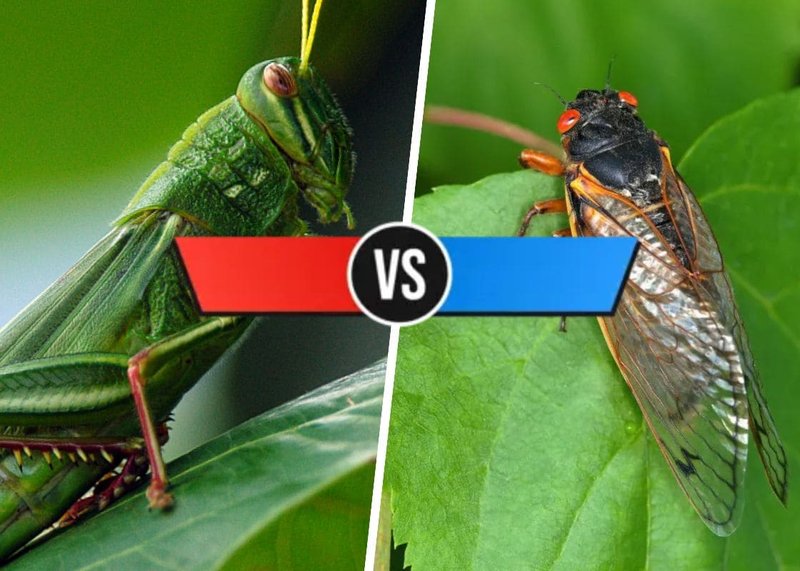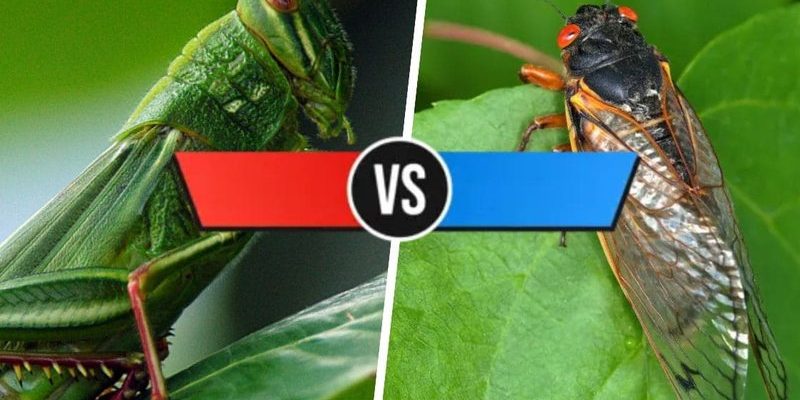
Locusts are unique not only because of their swarming behavior but also due to their ability to change color and behavior based on their environment. This adaptability draws some intriguing parallels with other insects. In this article, we’ll take a closer look at locusts and compare them with their closest relatives, unraveling the mysteries of these remarkable creatures.
What Exactly Is a Locust?
Let’s start with the basics. A locust is a type of grasshopper, specifically from the family Acrididae. What makes locusts unique is their ability to undergo a transformation that turns them from solitary to gregarious (or swarming) forms. This transformation often occurs when they’re in crowded environments, which can lead to huge migrations.
Typically, locusts are found in dry regions and are known for their impressive jumping ability. They can leap distances that are many times their body length. In their gregarious form, locusts display a yellow or green coloration, which can change depending on their environment and population density. This change in color can sometimes be mistaken for other insects if you’re not paying close attention to detail.
So, why does all this matter? Honestly, understanding locusts is crucial, especially for farmers and ecologists. Their swarming behavior can devastate crops and disrupt ecosystems, making it important to recognize the signs of a locust invasion early on.
Locusts vs. Grasshoppers: What’s the Difference?
Now, let’s get into the nitty-gritty: how do locusts compare to regular grasshoppers? While both belong to the same family, they have distinct behaviors and lifecycle patterns. Generally, grasshoppers are solitary creatures that don’t have the same swarming tendencies as locusts.
One key difference is in their adaptation to environmental pressures. Grasshoppers tend to stay in smaller groups and don’t change behavior based on population density. On the other hand, locusts can shift into a swarm mode when crowded, increasing their reproductive rates and forming large swarms. These swarms can travel long distances, sometimes even across continents!
When it comes to physical appearance, locusts and grasshoppers can look quite similar. They have long antennae, large hind legs for jumping, and a similar body structure. However, you might notice that some locusts can appear more colorful when grouped together. The change in coloration is a clear signal that these insects are in swarming mode, setting them apart from their more solitary grasshopper cousins.
Crickets: The Nocturnal Relatives of Locusts
Have you ever heard the chirping of crickets on a warm summer night? These little guys are often confused with locusts and grasshoppers, but they belong to a different family known as Gryllidae. Crickets are more active at night, unlike locusts, which are diurnal (active during the day).
One of the main differences is their physical structure. Crickets have shorter antennae and a more rounded body compared to locusts. They’re also known for their distinctive songs, produced by rubbing their wings together. This is quite the contrast from locusts’ quiet munching!
While crickets can be found in the same habitats, they tend to prefer damp and grassy areas. The diet of crickets includes a variety of plant materials and decaying organic matter, which might not be as destructive as the plant-eating habits of locusts. Moreover, crickets are often seen as beneficial insects in gardens, whereas locusts can spell disaster for crops.
Katydids: The Leafy Imitators
Let’s also introduce katydids into the mix. These insects are sometimes mistaken for grasshoppers due to their green color and similar body shape. However, they belong to the Tettigoniidae family. Katydids are known for their stunning camouflage, often resembling leaves or twigs—a clever trick to evade predators.
Unlike locusts, katydids are primarily nocturnal, living in trees and bushes. Their diet consists mainly of leaves rather than crops, which makes them less of a threat to agriculture. While they can produce sounds much like crickets, their calls are often a little less recognizable to the average ear.
If you were to compare a locust to a katydid in terms of behavior, you’d find that locusts are more social and can create swarms, while katydids have a much more solitary lifestyle. This makes them quite different, despite their physical similarities.
Why Understanding These Insects Matters
So why should you care about locusts and their similar insects? Here’s the thing: these creatures play significant roles in our ecosystems. Locusts, despite their destructive tendencies, contribute to nutrient cycling when they die and decompose. Their swarming behavior can serve as a natural form of pest control, impacting plant communities and animal populations.
On the flip side, understanding how grasshoppers, crickets, and katydids behave can help us appreciate biodiversity. Each of these insects has its role—whether it’s breaking down plant material, providing food for other animals, or, in the case of crickets, delighting people with their songs.
By learning about these insects, we can develop better strategies to manage them, especially in agriculture. Farmers can be more prepared for a locust invasion or might find ways to balance the good and bad impacts these insects have on their crops.
As we’ve explored, locusts share similarities with grasshoppers, crickets, and katydids, but each has its unique characteristics and roles in the ecosystem. Understanding these differences helps us not only appreciate the natural world but also informs practical approaches to agriculture and pest management.
The next time you hear a cricket chirping or see a locust hopping by, remember there’s a whole story behind these fascinating insects. They may seem small, but they play a big role in the tangled web of life. It’s all about embracing the complexity and beauty of the insect world, one leap at a time.

